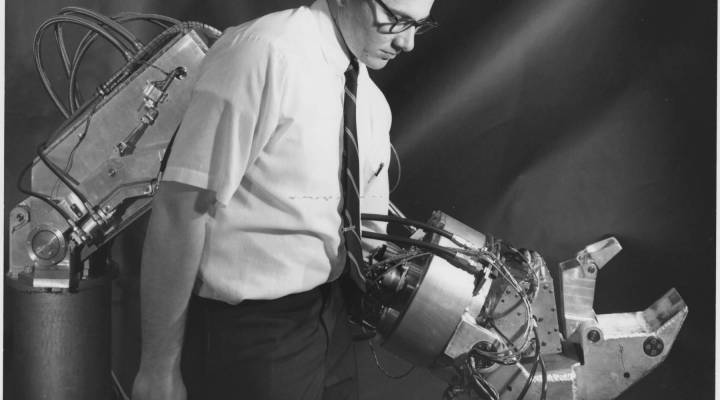
Tracing the history behind the cyber wars of today

It’s becoming increasingly unlikely a week will go by without news of a cyber hack.
It could be the social media account of a celebrity, private emails between Democratic National Committee members, or most recently, the NSA.
There’s a long and fascinating history here, behind how we got from the early days of cybernetics with sci-fi-like man-machine mashups, to autonomous machines in the workplace, to the cyber warfare of today.
Kai Ryssdal spoke with Thomas Rid, professor in the Department of War Studies at King’s College London. Rid’s new book is called “Rise of the Machines: A Cybernetic History.”
On cyber warfare:
What I’m trying to do in the book is portray the first big cyber attack against the United States government, military and indeed, private sector. And it started exactly 20 years ago in 1996 and it turned out at the time already to be a Russian attack… Now it is remarkable that the exact same adversary has simply evolved since then. The first cyber war — if you like — has never stopped. But the way we imagined it for those two decades was completely different from what actually happened. It wasn’t planes falling from the sky or chemical factories exploding. It turned out to be spying. And now it turns out to be somebody trying to clandestinely influence a U.S. election by tricking journalists, by tricking normal people to believe things that the other side wants them to believe.
Click the audio player above to hear the interview.
There’s a lot happening in the world. Through it all, Marketplace is here for you.
You rely on Marketplace to break down the world’s events and tell you how it affects you in a fact-based, approachable way. We rely on your financial support to keep making that possible.
Your donation today powers the independent journalism that you rely on. For just $5/month, you can help sustain Marketplace so we can keep reporting on the things that matter to you.












